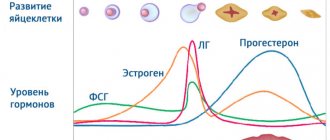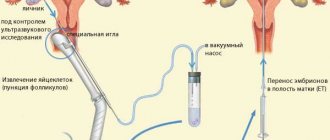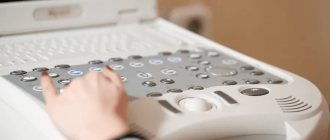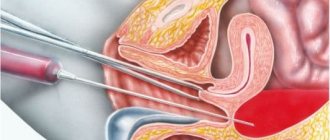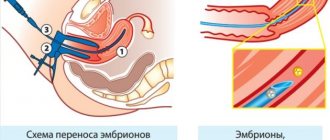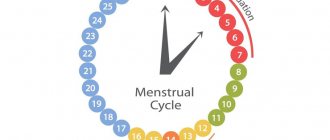Indications and contraindications
The ovarian puncture procedure is prescribed to patients whose infertility treatment is carried out using in vitro fertilization. There are also a number of cases unrelated to IVF when a puncture is needed. However, within the scope of this article they will not be considered as of interest. One of the conditions for obtaining eggs by puncture is the absence of contraindications for this procedure.
Ovarian puncture is a mini-operation performed in an operating room with anesthesia and other equipment. Contraindications may be the inadmissibility of general anesthesia, allergic reactions to the drugs used, excessive cystic formation of ovarian cysts, diseases that prevent the operation.
Complications after IVF
Any procedure that is performed without training or by an inexperienced specialist can have negative consequences. This also applies to IVF. Thus, stimulation of ovulation sometimes leads to hyperstimulation. As a result, ascites may develop, an accumulation of fluid in the abdominal cavity.
Complications sometimes arise after such a simple procedure as follicle puncture. Reviews from some patients are frightening - terrible pain, heavy bleeding. This is because during the puncture of the follicle, other pelvic organs may also be affected.
An equally common consequence of artificial insemination is infection. The main reason is medical negligence and unsterile conditions.
Therefore, you need to choose a clinic for IVF very carefully. And if such a manipulation as follicle puncture has negative reviews from patients, then the hospital that performs it should be avoided.
Preparation for puncture
Oocytes can be obtained both for direct fertilization and for collecting genetic material for cryopreservation. Thawed eggs are also used for IVF. The likelihood of success in this program increases if several eggs are involved in fertilization.
During a normal menstrual cycle, one egg matures in a woman's ovaries. To simultaneously obtain several oocytes at once, a hormonal simulation of superovulation is first performed. The number of oocytes obtained by puncture depends on the individual indications of the patient, as well as on the IVF protocol chosen by the doctor. Women's reproductive abilities vary. They depend on age, health status, and hereditary factors. Women react differently to hormonal injections. For some, a sufficient number of eggs do not mature at the same time.
Hormonal injections are prescribed by a doctor. A complex of drugs is used, the dosage of which and the mode of administration are described by the stimulation scheme. An individual regimen is selected for each patient, which includes a list of drugs and periods of their administration. When drawing up the diagram, the following is taken into account:
- woman's age,
- its reproductive characteristics and resources,
- diagnosed causes of infertility.
The period of stimulation of superovulation lasts from one to three weeks. In some cases, injections can be replaced with oral medications (tablets).
Useful video
Ovarian puncture is possible before natural ovulation occurs. Peak follicular growth is assessed using ultrasound. The procedure for retrieving eggs (puncture) is prescribed when the dominant follicle reaches a size of 16-20 millimeters. Too large follicles often become cysts, but this does not become a contraindication for puncture. The procedure for obtaining an egg in this case remains standard. When a cyst is punctured, the likelihood of obtaining a full-fledged healthy egg is reduced. But the percentage of successful punctures is still high.
The reproductive specialist determines the time of the puncture. It is very important, especially in the case of cystic follicles, to determine it as accurately as possible. To do this, you need to periodically conduct an ultrasound examination and monitor the growth of follicles and their reaction to the hormonal drugs used. By comparing the results with previous scans, the doctor also determines the number of follicles that are increasing in size. Before the puncture, patients undergo a comprehensive and special medical examination, including blood tests, ultrasound, electrocardiogram, and examination by a therapist. It is mandatory to undergo an analysis of the flora of the vagina and cervical canal, and a smear to test for sexually transmitted diseases.
3-4 days before the procedure, sexual intercourse, visiting the sauna, and drinking all types of alcoholic beverages are excluded.
1-2 days before the appointment of the puncture, the patient needs to avoid foods that contribute to gas formation in the intestines. These are mainly high-fiber foods, as well as sweets. Three to four hours before the procedure, drink water and any liquids.
Anesthesia
There are two types of pain relief for this procedure:
- general anesthesia using a mask;
- intravenous anesthesia.
Local type is not provided. The decision is made jointly, but the responsibility still lies with you. The dose is not so large, the anesthesia is short-term, so it will not cause you much harm.
When making a decision, you need to focus on your impressionability, willingness to endure pain to the end (it can be painful), pain threshold and psychological readiness for surgery.
In any case, this is an intervention and the integrity of the tissue will be violated. Assess the situation realistically.
IMPORTANT! If you decide to refuse anesthesia, but change your mind during the intervention, it’s okay, the doctor can administer it to you.
How does the operation take place?
General anesthesia used for follicular puncture ensures that there is no sensation. It would be more correct if the patient perceives this operation not as a surgical operation, but as a short-term manipulation, which is what it actually is. There are no cuts or seams left after it. General anesthesia in this case is necessary to disable the patient’s motor and reflex functions, which may interfere with the accuracy of the needle hitting the oocyte. For patients, the procedure looks like going in and out of anesthesia. The operation itself lasts 10-20 minutes, during which the doctor inserts a transvaginal pair (the head of the ultrasound machine and a needle-manipulator), punctures and extracts the contents of the follicles.
In standard practice, doctors try to obtain many eggs at once, which can be fertilized and frozen already at the embryonic stage. The presence of several fertilized eggs greatly increases the success of IVF, since not every transplant results in pregnancy. If repeated attempts are needed, previously frozen embryos are used and repeated puncture is not necessary.
Ways to increase chances of fertilization
Increasing the possibility of successful IVF can be done in the following ways:
- increasing the activity and production of sperm (taking good quality dietary supplements, vitamins, a balanced diet or specially prescribed medications);
- saturating the expectant mother with similar beneficial substances (strictly as prescribed by a specialist);
- full compliance with the laboratory conditions of the process (this already depends on the qualifications of the clinic and laboratory technicians responsible for fertilization).
Postoperative period and recovery
Women undergoing oocyte retrieval should not worry. You should not be afraid of pain, since the maximum that is felt is the insertion of a catheter into a vein by the anesthesiologist. Recovery from anesthesia occurs over several hours, which the patient spends in the clinic. At this stage, you feel distracted attention, weakness, and slight dizziness. These disorders resolve quickly, so the patient usually goes home. It is recommended to be accompanied by relatives or friends, since anesthesia drugs are still present in the blood, and driving under their influence is prohibited.
Manipulations during egg retrieval are low-traumatic, so there is most often no serious pain in the postoperative period. There may be nagging pain when moving, small traces of blood on the underwear. Your doctor may prescribe painkillers and anti-inflammatory drugs at first.
Complications after puncture are very rare. But still, if the patient feels severe pain in the lower abdomen, vestibular disorders, or excessive weakness, it is necessary to urgently consult a doctor. Most often these are symptoms of internal bleeding. Compliance with all the rules for this procedure reduces the likelihood of such a complication to very low.
After puncture, during the first few days, patients may experience ovarian hyperstimulation. This syndrome is accompanied by nausea, pain in the lower abdomen, and bloating. In some cases, the body reacts with vomiting, urinary retention, constipation or diarrhea. The presence of such symptoms should be reported to your doctor.
The patient is recommended to spend the first day after surgery lying down. It’s best to sleep, don’t do homework, don’t lift anything, or bend over too much.
Donation procedure
In modern times, every couple who has problems conceiving a child can turn to medical technologies and make their dream come true. One of the most important aspects in solving this problem is the egg donation procedure. A woman who decides to become a donor does not subject her body to strong or long-term changes and does not cause harm to her health. In addition, it helps solve a really difficult and very important problem. Extremely pressing questions that frighten future donors - what is a donor egg? How does this happen?
What is done with the retrieved eggs?
Using a microscope, eggs are found in the liquid content of the follicles, washed and transferred to a Petri dish with a prepared nutrient medium. Placed in an incubator, they will expect to be fertilized quickly by sperm. Depending on the chosen method, in vitro fertilization (in glass) or ICSI (introcytoplasmic sperm injection) is subsequently performed. Embryos are cultured in laboratory conditions.
Cultivation lasts from two to five days, after which one or a pair of embryos are transplanted into the uterus, and the rest (if any) are cryopreserved and can be used in the future. This means that just a few days after the puncture, the patient will have to undergo another procedure - transfer of the embryo into the uterus.
In what cases is it carried out?
There are many reasons why a woman cannot become pregnant while her ovaries are functioning normally.
This includes:
- obstruction of the fallopian tubes (as a result of untreated inflammation and colds of the pelvic organs that have become chronic);
- hormonal imbalances (when the reproductive organs, in general, work properly, but they receive insufficient hormonal impulse to activate the processes);
- hypofunction, or removal of part of the ovary (in this case, the follicles mature, but there are very few of them, and the chance that some will be fertilized is almost zero);
- partial “wear and tear” or damage to the endometrium (intrauterine lining), due to frequent abortions or other surgical interventions);
- on the father's side - this may be insufficient sperm activity.
In general, none of the above is an obstacle to having a child. All of them are corrected with the help of modern medicine, the IVF method.
INTERESTING! Biological incompatibility (when the body of both parents functions normally, but the woman’s body rejects the foreign protein fraction of the partner) is not an obstacle to in vitro fertilization.
